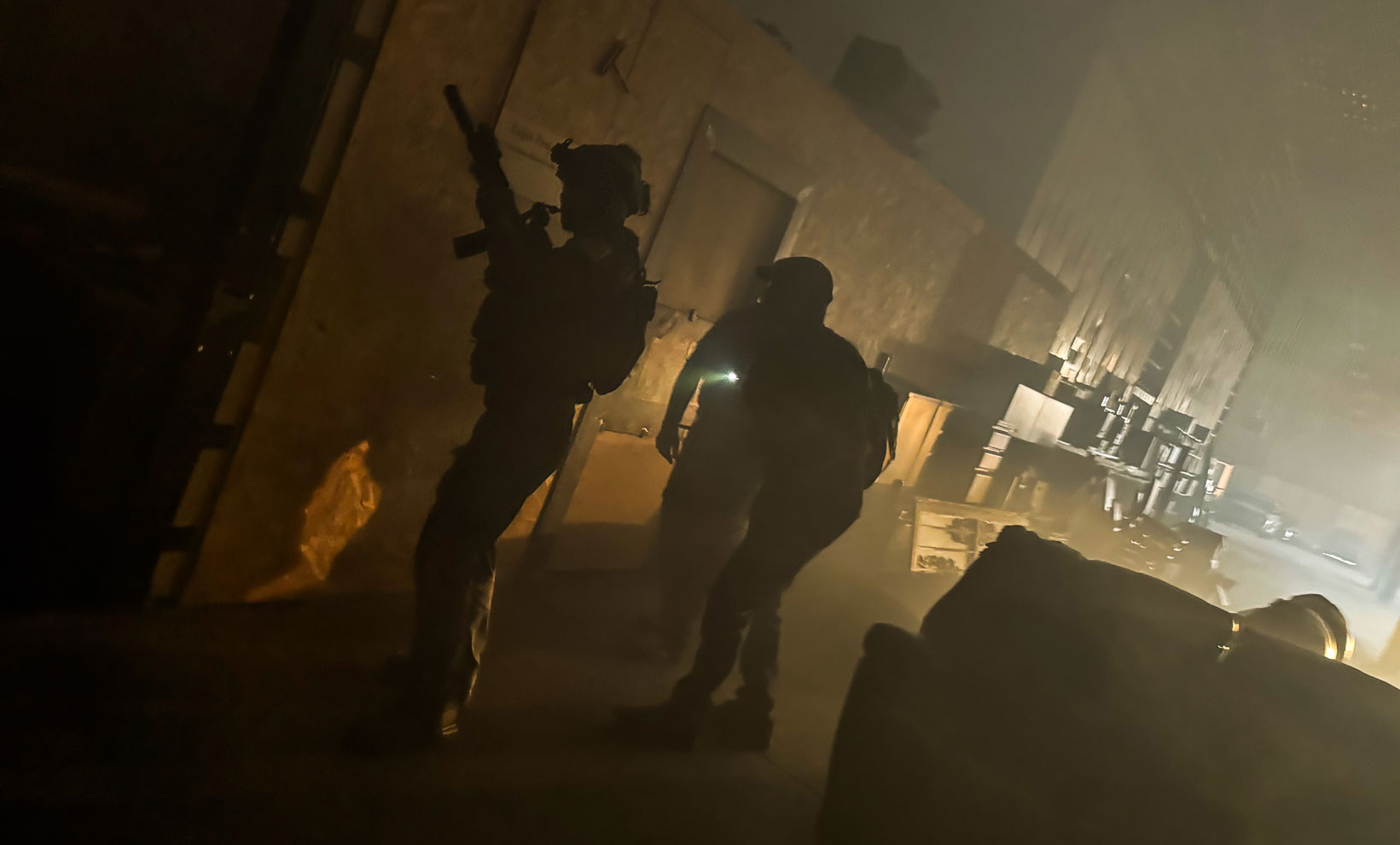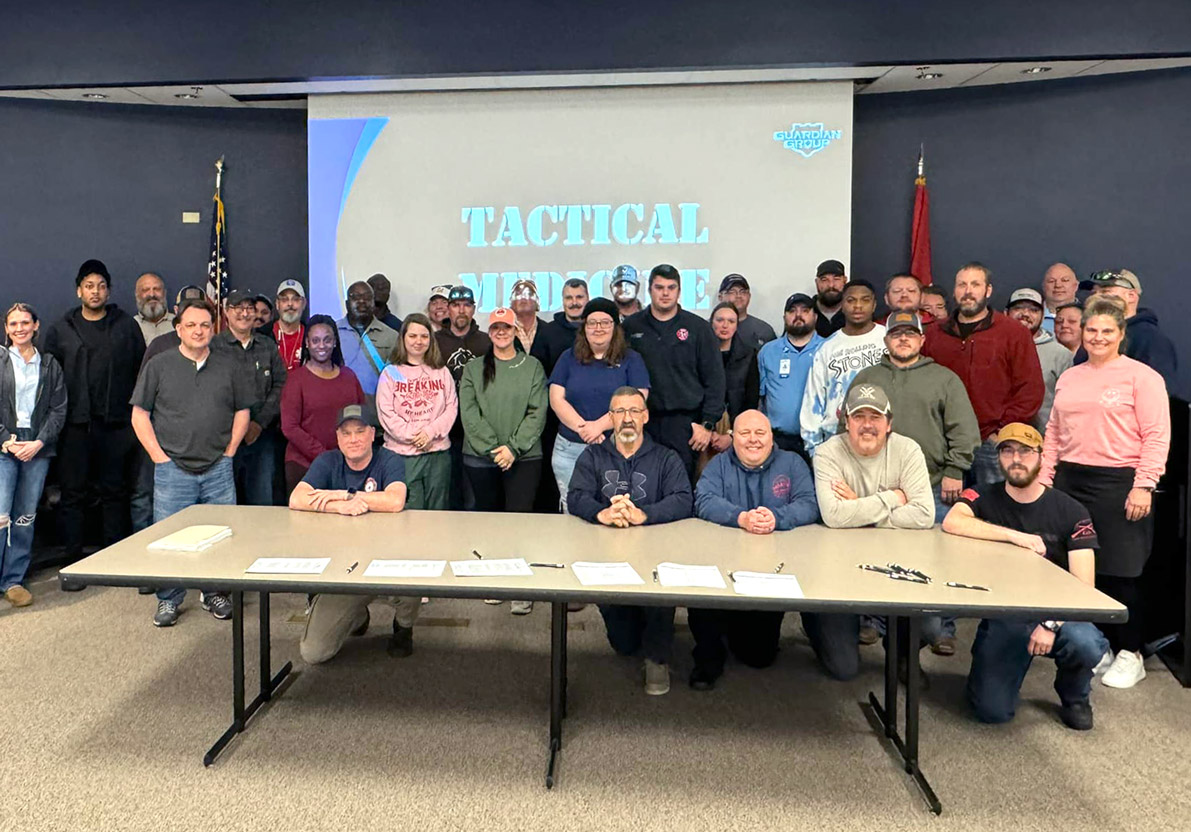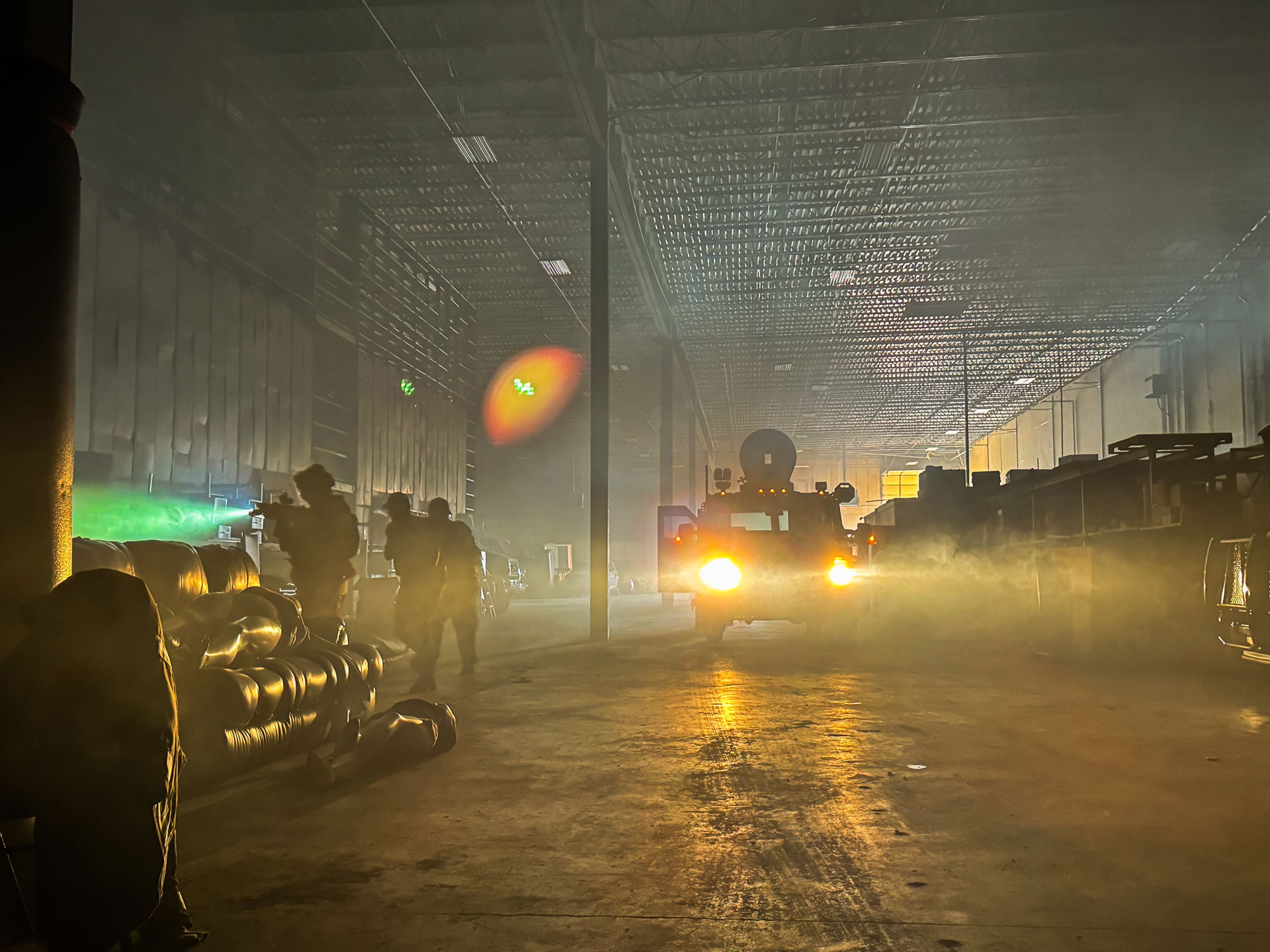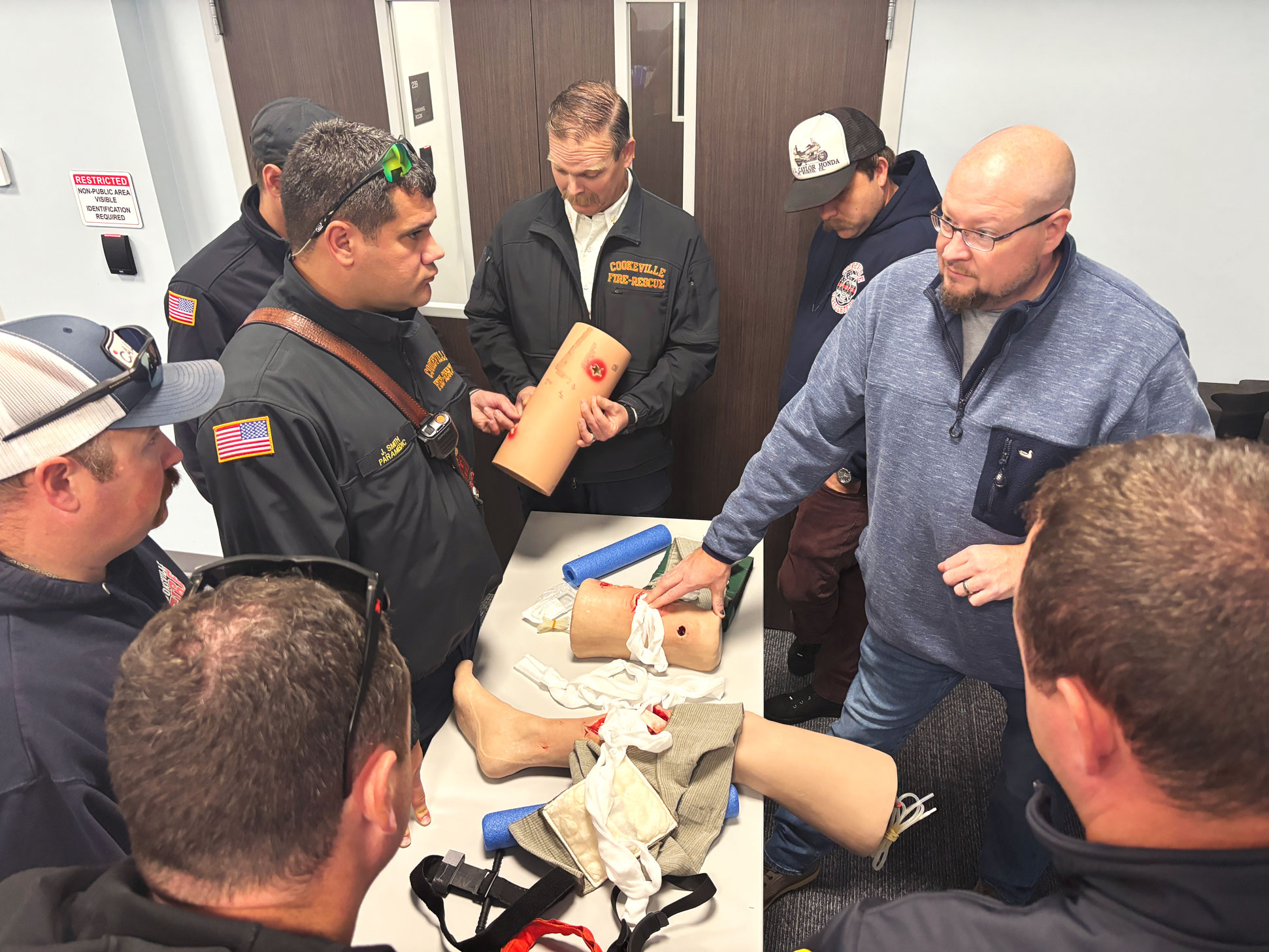Tactical Classes
Tactical Emergency Casualty Care
This course teaches EMS practitioners and other prehospital providers how to respond to and care for patients in a civilian tactical environment.
The course presents the three phases of tactical care and integrates parallel EMS nomenclature:
- Hot Zone/Direct Threat Care that is rendered while under attack or in adverse conditions.
- Warm Zone/Indirect Threat Care that is rendered while the threat has been suppressed but may resurface at any point.
- Cold Zone/Evacuation Care that is rendered while the casualty is being evacuated from the incident site.
The 16-hour classroom course includes all new patient simulations and covers the following topics:
- Hemorrhage control including immediate action drills for tourniquet application throughout the course;
- Complete coverage of the MARCH assessment;
- Surgical airway control and needle decompression;
- Strategies for treating wounded responders in threatening environments;
- Caring for pediatric patients;
- Techniques for dragging and carrying victims to safety; and
- A final, mass-casualty/active shooter event simulation.
NAEMT’s TECC course is endorsed by the American College of Surgeons Committee on Trauma, is consistent with the current guidelines established by the Committee on TECC (Co-TECC), and meets all of the updated National Tactical Emergency Medical Support Competency Domains. This course is accredited by CAPCE for 16 hours of continuing education credit, and recognized by NREMT.
NAEMT is a recognized education partner of the Co-TECC. The Co-TECC establishes guidelines for the provision of prehospital care to injured patients during a tactical incident. The Co-TECC neither creates curriculum for the prehospital provider, nor does it endorse the curriculum of other organizations.
Don’t see the course you’re looking for? We can custom-build an accredited course option to fit your exact needs.

TECC for Law Enforcement Officers and First Responders (TECC-LEO)
An 8-hour classroom course specifically designed for law enforcement officers and other non-EMS first responders. The course covers materials found in the 16-hour TECC provider course at a level appropriate for first responders. It includes 8 hours of content, which includes interactive lectures, skill stations, and patient simulations. Upon successful completion of the course, students receive a certificate of completion, a wallet card recognizing them as a TECC-LEO provider for 4 years, and 8 hours of CAPCE credit for qualified participants.
Tactical Combat Casualty Care (TCCC)
Tactical Combat Casualty Care (TCCC) is developed by the U.S. Department of Defense, Defense Health Agency (DHA) Joint Trauma System (JTS) to teach evidence-based, life-saving techniques and strategies for providing the best trauma care on the battlefield. NAEMT conducts TCCC courses as specified by the DHA-JTS. NAEMT currently offers three types of TCCC courses.
- TCCC-ASM (TCCC All Service Members – Tier 1) is a 7-hour course for all service members.
- TCCC-CLS (TCCC Combat Lifesaver – Tier 2) is a 40-hour course for non-medical military personnel deploying in support of combat operations.
- TCCC-CMC (TCCC Combat Medic/Corpsman – Tier 3)* is a 63-hour course for military medical personnel including medics, corpsmen and pararescue personnel deploying in support of combat operations.
The foundational medical science upon which TCCC is based is published in NAEMT’s PHTLS Military textbook in which the military chapters are written by members of the JTS Committee on TCCC. TCCC courses offered by Guardian Group are endorsed by the Joint Trauma System and the American College of Surgeons. TCCC-CMC and TCCC-CLS courses are accredited by CAPCE and recognized by NREMT.
NAEMT’s TCCC courses are taught by a global network of experienced, well-trained instructors. To support training centers, instructors and students, NAEMT maintains a network of affiliate faculty both in the U.S. and internationally, and staff at its Headquarters Office.

TCCC Combat Medic/Corpsman (TCCC CMC)
TCCC Combat Medic/Corpsman (TCCC CMC) is a 63-hour course for combat medics, corpsmen, pararescue personnel and other military medical personnel being deployed into combat. This course is intended to train participants to provide more advanced prehospital casualty care than is taught in the ASM or CLS courses. Instruction includes the use of advanced medical equipment and knowledge in the management of life-threatening injuries commonly encountered on the battlefield.
The TCCC-CMC course replaces the TCCC-MP course.
TCCC Combat Lifesaver (TCCC CLS)
TCCC Combat Lifesaver (TCCC CLS) is a 40-hour course for non-medical military personnel being deployed into combat.
The TCCC CLS course replaces the TCCC for All Combatants (TCCC-AC) course. As of January 1, 2021, NAEMT no longer offers the TCCC-AC course.
TCCC All Service Members (TCCC ASM)
TCCC All Service Members (TCCC ASM) is a 7-hour course for all service members that teaches TCCC concepts and lifesaving skills to render basic medical aid to a trauma casualty.

The All Hazards Disaster Response (AHDR) course
The All Hazards Disaster Response (AHDR) course employs a systems-based approach to disaster preparedness and response, with a focus on caring for ill and injured patients during a mass-casualty incident or disaster. The course teaches students how to respond to the many types of disaster scenarios they may encounter, including natural disasters, infrastructure failings, fires and radiological events, pandemics, active shooter incidents, and other mass casualty events. AHDR educates participants on the critical actions required to support patient and practitioner safety during disaster response.
Topics covered in the course include:
- Incident Command System
- Communicating effectively during disasters
- Mutual aid and interoperability
- PPE and infectious diseases
- Managing resources such as supplies, medications, and equipment
- Incendiary devices and blast injuries/li>
- Triage and transport strategies and challenges
- Patient tracking and evacuation
AHDR includes a robust library of disaster simulations to provide learners with the opportunity to apply scene size-up, patient triage, evacuation, and transport decisions in a low-stakes, structured environment. Course activities reinforce key concepts of disaster response.
AHDR is appropriate for all levels of EMS practitioners and other medical professionals providing prehospital care. This course is offered in the classroom and provides 8 hours of CAPCE credit and NREMT recognition

ACS Stop the Bleed
Why Learn?
A bleeding injury can happen anywhere. We’ve all seen it happen too often—on the news or in everyday life. Life-threatening bleeding can happen in people injured in serious accidents or disasters. Become an immediate responder by learning how to control bleeding with ACS Stop the Bleed.
What You’ll Gain from the Course
The person next to a bleeding victim may very well be the one who’s most likely to save him or her from bleeding to death. By learning how to control bleeding, you’ll gain the ability to recognize life-threatening bleeding and act quickly and effectively to control bleeding once you learn three quick techniques. Take the ACS Stop the Bleed training course and become empowered to make a life-or-death difference when a bleeding emergency happens.
How We Teach
Our instructors will teach you live—in person, using training materials specially developed to teach bleeding control techniques. They will not only instruct you, they will be available to check your movements as you practice three different bleeding control actions. They will keep working with you until you demonstrate the correct skills to stop the bleed and save a life.
What You’ll Learn
What stops bleeding? In an ACS Stop the Bleed course, you’ll learn three quick techniques to help save a life before someone bleeds out: (1) How to use your hands to apply pressure to a wound; (2) How to pack a wound to control bleeding; (3) How to correctly apply a tourniquet. These three techniques will empower you to assist in an emergency and potentially save a life.
Who Can Take the Course
An ACS Stop the Bleed course is for people who are interested in learning this lifesaving skill for bleeding control. The American College of Surgeons Stop the Bleed program has trained nearly 4 million people including students, teachers, and community groups. We are committed to training anyone who is old enough to understand what the course teaches and is interested in learning how to STOP THE BLEED® and save a life.
Is there an age requirement for ACS Stop the Bleed?
There’s no minimum age requirement for the ACS Stop the Bleed course, although we do recommend letting parents/guardians know about the graphic images and content included in the presentation. Instructors have taught the class to kids of all ages!
